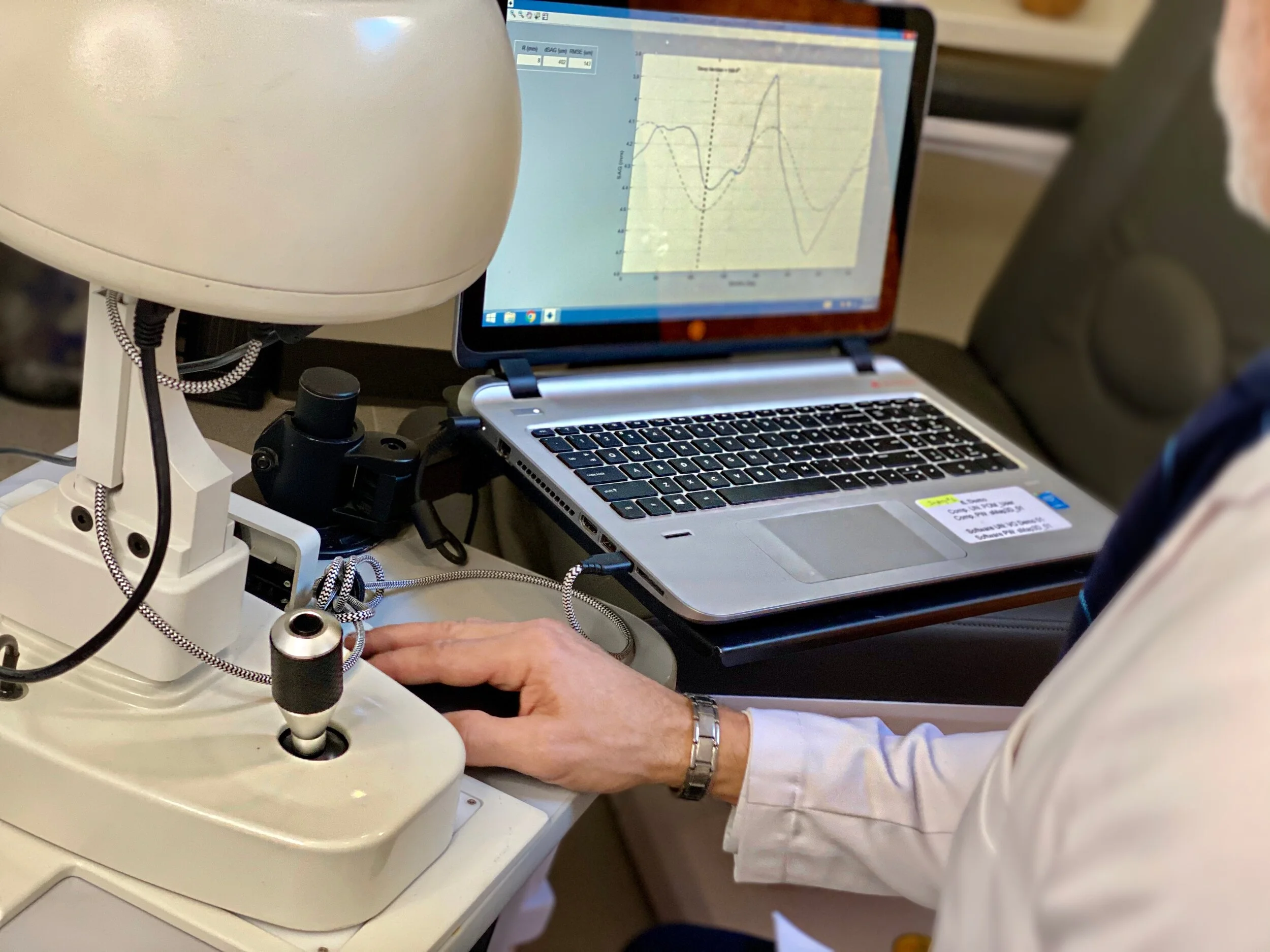

WHAT IS KERATOCONUS?
It is a non-inflammatory eye condition. The cornea is the thin-walled, "dome-shaped," normally rounded transparent region forming the front of the eyeball and serving as a protective covering and helps to focus or refract light waves onto the retina at the back of the eye. In those with Keratoconus, slowly progressive thinning of the cornea causes it to protrude forward in a conical shape, leading to blurry vision and other vision problems. The exact cause of Keratoconus is unclear, but there are certain facts that are known.
THE SYMPTONS
Double vision
Ghosting
Blurred images
Poor night vision
Can no longer drive a car
Difficulty reading
Uncomfortable with glasses
Intolerant of your contact lenses

THE PROCESS
Treatment depends on the severity of the Keratoconus. At Chicago Keratoconus Institute, we will evaluate the progression of your keratoconus and tailor treatment to help you achieve the best possible vision. That Process may include:
Pentacam Corneal Mapping (Tomography)
I.Profiler Plus (Corneal Topography)
Corneal Pachymetry
Scleral Profilometry
Treatments
Treatment really depends on the severity of the Keratoconus.
1 - STABLE, UNCHANGING KERATOCONUS
If the Keratoconus is stable and unchanging (non-progressing or "form fruste"), then excellent vision can be achieved with the appropriate contact lenses and routine monitoring.
2 - ADVANCING KERATOCONUS
If the Keratoconus is advancing, it is best to intervene surgically to arrest the progression of the condition. These options include INTACs corneal rings, and Corneal Crosslinking.
3 - ADVANCED KERATOCONUS
If the Keratoconus is very advanced and INTACs and Corneal Crosslinking are no longer an option, a Corneal Transplant is the only remaining option.
All surgical options will still require some sort of refractive correction after the procedure, in the form of eyeglasses or contact lenses.
CONTACTS
Contact lenses are required for the visual improvement in patients with keratoconus. Various contact lens options, such as rigid gas permeable (RGP) lenses, soft and soft toric lenses, hybrid lenses and scleral lenses are available
INTACS
Intacs are very small clear plastic arcs that are designed to be inserted into the substance of the cornea in people who have keratoconus and who can no longer see properly with glasses or contact lenses. Intacs were approved by the FDA for treatment as an alternative to corneal transplant, which used to be a standard treatment for keratoconus prior to Intacs and cross-linking.
CORNEAL CROSS-LINKING
Cornea cross-linking is a powerful procedure that can strengthen the weakened collagen fibers of the cornea (which is the cause of keratoconus) and stop it from getting worse. It’s a 30-minute procedure performed in the doctors’ office. Cross-linking can be performed either non-invasively (epi-on) or invasively (epi-off). Epi-off cross-linking carries many more risks than epi-on cross-linking. It likely does not cure keratoconus, but can significantly prevent the disease from progressing.”
CORNEAL TRANSPLANT
A corneal transplant is warranted when the cornea becomes dangerously thin or when sufficient visual acuity to meet the individual’s needs can no longer be achieved by contact lenses due to steepening of the cornea, scaring or lens intolerance. Lens intolerance occurs when the steepened, irregular cornea can no longer be fitted with a contact lens, or the patient cannot tolerate the lens.
COMFORT
HYDRATION
SHARP VISION
“CENTER OF EXCELLENCE”
Dr. Lopez offers one of the most advanced scleral lenses called the LATITUDE that uses the data from the eye to design a lens that matches every “hill & valley” of your eye.
The Latitude® Scleral exactly conforms to the scleral shape at the landing zone and is designed to have uniform central, mid-peripheral and limbal clearances regardless of the degree of corneal irregularity.
The Latitude® Scleral exactly conforms to the scleral shape at the landing zone and is designed to have uniform central, mid-peripheral and limbal clearances regardless of the degree of corneal irregularity.
“Information is power and the sMap3D™ gives the fitter the power to elevate scleral lens fittings from the dark ages of trial and error.” -Dr. Lopez.
WE SEE THE WORLD THROUGH SCLERAL LENSES
CHICAGO KERATOCONUS INSTITUTE TRUSTED PARTNER












